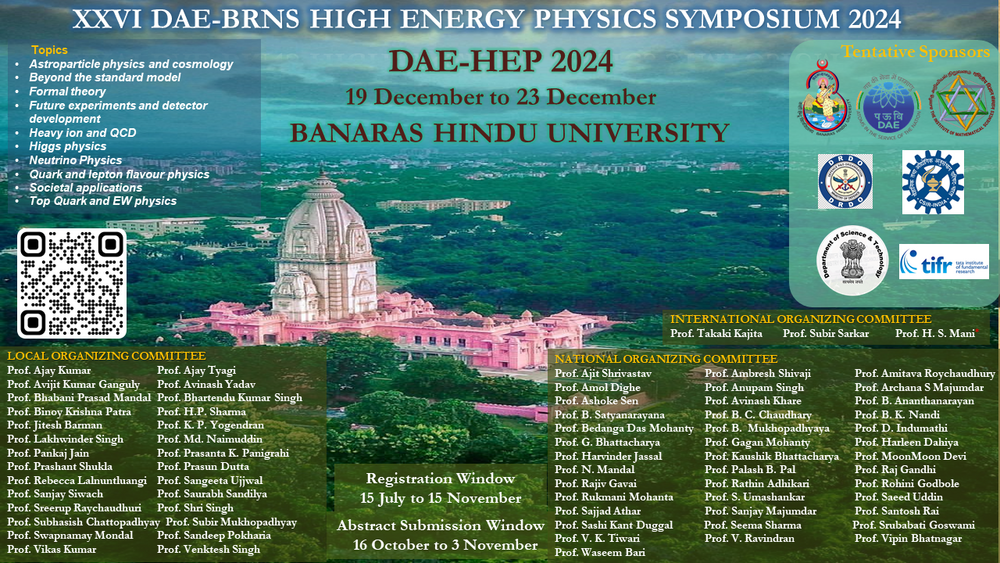Speaker
Description
Motivated by recent studies of supersymmetric black holes, we revisit the phase diagram of both non-BPS and BPS $AdS_5$ black holes in grand canonical ensemble using recently constructed four derivative effective action. In the universal two derivative theory, for non-BPS $AdS_5$ black holes, three distinct limits exist where the phase diagrams change qualitatively. In the sub critical electric potential limit ( $0 \leq \Phi < \sqrt{3}$ ), the phase diagrams resemble those of Schwarzschild black holes, featuring branches for small and large black holes, with the latter undergoing a Hawking-Page (HP) transition. Considering the four derivative ($\alpha$) corrections to be small, the Schwarzschild-like behavior remains intact. For temperatures below $T_{HP}$, $\alpha$ corrections destabilize both small and large black holes; however, for temperatures above $T_{HP}$, they continue to destabilize the small black hole while stabilizing the large one. In the critical electric potential limit ($\Phi = \sqrt{3}$), only large black holes with negative Gibbs free energy exists, with no HP transition occurring and $\alpha$ corrections stabilize these large black holes. In the maximum angular velocity limit ($ \Omega = 1$), only small black holes with positive Gibbs free energy exist, and $\alpha$ corrections destabilize them. Finally we present four derivative corrected phase diagram of BPS $AdS_5$ black holes with $\varphi' = 0$. The two derivative BPS phase diagram are Schwarzschild kind, hence as expected the effect of $\alpha$ corrections are similar to sub critical electric potential limit of non-BPS $AdS_5$ black holes.
| Field of contribution | Theory |
|---|

